At the 10th CII Pulp & Paper Summit, held on 1 July 2025 at Hotel Le Meridien, New Delhi, industry leaders, policymakers, and technology providers came together under the theme, “Towards Future-Ready Enterprises: Advancing Innovative Water Solutions.” The seminar focused on advancing sustainable water practices in one of India’s most water-intensive industries- the pulp and paper industry. The inaugural session was followed by a keynote address by Mr. Sanjay Singh, Former Divisional Chief Executive & Group Head, ITC PSPD. A session on “Future-Ready Enterprises: Strategies for Sustainable Growth”, focused on how forward-thinking companies in the pulp and paper sector are leveraging innovative water solutions to drive sustainable growth. Drivers and enablers of the pulp and paper sector, case studies in sustainable water management, and finally technologies shaping smart water management were addressed.

The opening session set the stage by examining the strategic importance of water in the pulp and paper sector, from operational risks such as water scarcity, regulatory pressures, and climate change, to emerging opportunities in circular water use, digital transformation, and sustainable growth. Mr. Pawan Agarwal, Summit Chairman, President IPMA & CMD Naini Papers Limited, Mr. Sidhartha Mohanty, Divisional Head- Manufacturing and Projects, ITC- PSPD, Mr. Pavan Khaitan, President, IPPTA and Vice Chairman, Kuantum Papers Limited, Mr. Amit Verma, Director, NITI Aayog, and Mr. Bhushan Lamsoge, Scientist-E & HOD, CGWA, Ministry of Jal Shakti offered insights on how the sector can future-proof operations, mitigate water-related risks, and turn sustainability into a competitive advantage. The session was concluded by Ms Shilpa Nischal, Principal Counsellor, CII Water Institute.

Kick-starting the inaugural session, Mr. Pawan Agarwal, Summit Chairman shared an anecdote of how the team arrived at the summit’s topic. He said, “We’ve been talking about the topic of water for many years now. While discussing with the CII team as chairman, we brainstormed the main theme for this summit. We decided on a phrase—future readiness—which evolved into ‘Towards Future-Ready Enterprises,’ and then added ‘Advancing Innovative Water Solutions.’”
Focusing on the urgent need to address water usage, he pointed out, “The paper industry has not been in the best light when it comes to freshwater consumption, particularly in northern India where most mills rely on groundwater, not surface water.
Some in Punjab use canal or river water, but the majority extract it from the ground. Authorities like NITI Aayog and CGWA (Central Ground Water Authority) have rightly raised concerns and are pushing for reduced consumption of groundwater. Let me reiterate, with full conviction, that groundwater has only one justified use: human or animal consumption. It should not be used in industry—or even in agriculture. We must acknowledge this and let it set the tone for today’s seminar.”
Watch: In Pursuit of Lesser Water Footprint
Highlighting the progress made by the pulp and paper industry, Mr. Agarwal stated, “We’ve made progress, from a specific water consumption of 200 m³/tonne down to 30 m³/tonne in many mills, although the current norm is below 50 m³/tonne. Still, we need to bring it down to single digits.”
“We’ve made progress, from a specific water consumption of 200 m³/tonne down to 30 m³/tonne in many mills, although the current norm is below 50 m³/tonne. Still, we need to bring it down to single digits.”
Talking about the solution, he shared his experience and perspective, “In my 25- 30 years of experience, I’ve found that closing the loop at every individual section—or sub-section—is the best way forward. Mixing water streams leads us nowhere, forcing us into expensive end-of-pipe solutions like membranes and ROs. We must invest in equipment that consumes the least freshwater at every step—from machines to stock preparation systems. And we must treat and reuse backwater as a key resource, not just rely on freshwater.”
Closing his remarks, Mr. Agarwal stressed the role of technology in driving future solutions. “The paper industry is already working hard in this direction, but we still have a long journey ahead. One final thought: we must leverage technology, especially AI, to the fullest. Let us not make excuses like ‘It’s not being done globally, so we can’t do it in India.’ We might be the first—but we must do it.”
Also Read: India-genous Tech: Paper Mills Harness Homegrown Innovation
He concluded with a call to action for stakeholders, and said, “I urge all technology providers present here to develop indigenous AI tools to track water footprints at each section and sub-section. We should monitor treated effluent properties, create algorithms, and drive efficiencies. If we are committed, we can reach single-digit water usage without compromising product quality. The idea that recycling reduces quality is just an excuse—we’ve seen otherwise.”
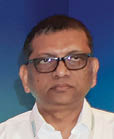
Mr. Sidhartha Mohanty, Divisional Head- Manufacturing and Projects ITC Ltd.- PSPD, said, “ India holds 18% of the world’s population but only 4% of its freshwater, with per capita availability at just 1,486 m³—already within the water-stressed range as per NITI Aayog. Wastewater treatment is no longer a liability; it’s a revenue opportunity. We can now recover biogas, chemicals, and reuse water. To secure our water future, we must combine strategies like rainwater harvesting, and adopting advanced treatment, AI, and machine learning for optimisation.”
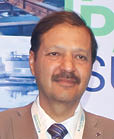
Mr. Pavan Khaitan , President, IPPTA and Vice Chairman, Kuantum Papers Limited, emphasized that water must be viewed as a strategic asset, not just a utility. “Let us ensure that our industry meets needs—delivering paper—without draining the planet’s lifeblood,” he urged. Highlighting technology’s role, he cited advanced reuse systems like reverse osmosis, membrane filtration, and heat recovery solutions that can cut drying energy by up to 50%. He recommended, “AI-based smart water management systems, which optimize operations, reduce chemical use by 10%, and cut energy use by 15%—making them critical for both sustainability and cost efficiency.”
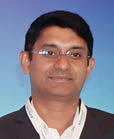
Mr. Amit Verma, Director at NITI Aayog, underscored the urgency of water efficiency, noting that “India has one-fifth of the world’s population but only one twenty-fifth of its water resources.” He warned that regulations, both domestic and international, are rapidly evolving, making sustainability not just a compliance requirement but a business imperative, especially for sectors like pulp and paper with high water footprints.
Mr. Verma emphasized the importance of advanced technologies like AI and IoT, not as policing tools but “as optimization enablers,” citing startups in Bengaluru that have helped companies improve water use by tracking flows at every stage. “Achieving single-digit water use per tonne of paper,” he said, “will be critical for global competitiveness, especially as paper emerges as a plastic alternative.”
He also highlighted NITI Aayog’s role in policy facilitation, including the Green Credit Programme and carbon market mechanisms, encouraging industry collaboration. “We are committed to technology transfer, resource security, and helping industries become truly future-ready,” he added.
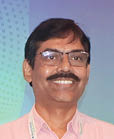
Mr. Bhushan Lamsoge of the Central Ground Water Authority (CGWA) urged the pulp and paper industry to adopt stronger water conservation practices. He highlighted that 130 units in the Ganga-Yamuna plains alone extract over 150,000 kilolitres (KLD) of groundwater daily.
He stressed that the industry must comply with CGWA’s norms, including installing flow meters at abstraction and discharge points, and reducing water usage by 20%—a one-time requirement during NOC renewals. He warned that inflating water estimates or failing to submit proper impact assessments may lead to penalties.
To reach global benchmarks of 28.66 m³/tonne (or lower), he recommended three key strategies: closed-loop water recycling, advanced effluent technologies like membrane bio reactors (MBR) and RO, and AI- and IoT-powered water management. “This is the AI era—embracing it is not optional,” he emphasized, urging industries to commit to rainwater harvesting and responsible usage for long-term sustainability.
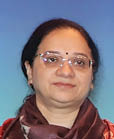
Concluding the inaugural session of the 10th CII Pulp and Paper Summit, Ms Shilpa Nischal, Principal Counsellor, CII Water Institute, underscored a decade-long journey of fostering water efficiency in the sector. She stressed, “Water is no longer optional—it’s fundamental,” and emphasized three key imperatives: operational efficiency, watershed-level sustainability, and supply chain resilience. Referring to NITI Aayog’s water neutrality guidance, she reminded, “Every step—however small—matters.”
The last session focused on transformative technologies in water management for the pulp and paper sector. Key speakers included- Mr. Tapan Kumar Rai, a representative from Ion Exchange India Ltd, Mr. Vijay Kumar, Managing Director, Swan Environmental Pvt. Ltd., Mr. Sanjeev Dhar, Corporate Regional Head – North, Thermax Limited, along with Mr. Tanveer Ahmad, National Head Cooling Division, Thermax India and Mr. Jukka Hakola, COO, Sansox, Finland.
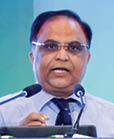
Mr. Tapan Kumar Rai, a representative from Ion Exchange India Ltd., emphasized the shift from groundwater to alternative sources like surface water and rainwater, highlighting the need for advanced technologies to manage turbidity and seasonal variation. He showcased solutions such as Ultra High Rate Solid Contact Clarifier (UHRCC), membrane systems for ZLD, and External Circulation Sludge Bed Reactor (ECSB) anaerobic treatment. Importantly, he introduced- Ion Site, a digital platform enabling real-time monitoring, predictive maintenance, and the creation of digital twins to optimize plant performance.
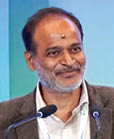
Mr. Vijay Kumar of Swan Environmental passionately advocated for Total Organic Carbon (TOC) monitoring as a transformative tool in water management, offering rapid, accurate, and chemical-free analysis compared to traditional (biochemical oxygen demand)BOD/(chemical oxygen demand) COD tests. He emphasized its value in cost reduction, regulatory compliance, and environmental protection. Highlighting its impact across water treatment systems and its growing global relevance, he urged industry leaders to embrace TOC monitoring for smarter, sustainable operations.

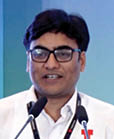
Mr. Sanjeev Dhar and Mr. Tanveer Ahmed from Thermax India Limited, highlighted their integrated solutions for heating, cooling, water treatment, and sustainability. He emphasized the role of EdgeLine, Thermax’s digital twin platform, which enables real-time monitoring, diagnostics, and performance optimization across systems. With innovations in ZLD, odor and color treatment, and electric boilers, Thermax continues to lead with smart, efficient, and environmentally responsible technologies tailored to industrial needs.
Thermax introduced the heat pump as a key water- and energy-saving solution, recovering heat from cooling tower water to preheat boiler feedwater. This reduces both steam and cooling tower make-up water consumption. Thermax offers shared-savings models and has implemented the technology across industries, now targeting the paper sector. With ongoing discussions and site visits, they expect to showcase a paper mill success story by next year.
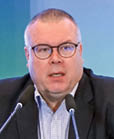
Mr. Jukka Hakola from Sansox highlighted the critical role of water quality in the pulp and paper industry and introduced the company’s Ox Tube technology. This stainless-steel device efficiently dissolves gases like oxygen and ozone into water, improving industrial wastewater and natural water systems. He shared global success stories, including in Finland and Southern Europe, and emphasized its potential in India to reduce odour, improve dissolved oxygen levels, and enhance environmental impact—with minimal energy use and operational cost.
The 10th CII Pulp and Paper Summit concluded with a need for sustainable water management. Key discussions focused on reducing groundwater use, adopting preventive strategies, and embracing technologies like digital twins for real-time plant monitoring and optimization. The shift to TOC-based monitoring and innovations such as color treatment, bio-agents, and forward osmosis show promise.



